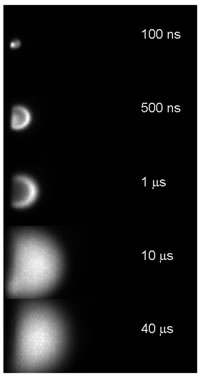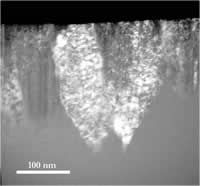|
Plasma/energetic beam - surface interaction The research activity moves along two lines: 1. Modelling of the synthesis of “novel” surfaces via cluster/nanoparticle (NP) deposition. Clusters are produced by pulsed laser ablation in inert, or chemically reactive gas atmosphere, possibly in the presence of a radio-frequency plasma. Ablation plasma diagnostics (imaging and optical spectroscopy) and modeling allow for carefully designing size and size distribution of the produced NPs. Systems considered recently, also in collaboration with experimetal groups, include Ag, Au and AgAu alloys for spectroscopic applications (SERS substrates); WO3 for gas sensing. 2. Morphological, structural, chemical surface modifications induced by energetic ion bombardment, both in the (nuclear) elastic collision regime and in the (electronic) inelastic collision regime. Physical simulation of radiation damage in fission and fusion reactor environments. The studied nitrides (ZrN), oxides (ZrO2 ), carbides (ZrC, SiC) are strategic materials in reactor industry and research. Selected publications:
|
|
|


